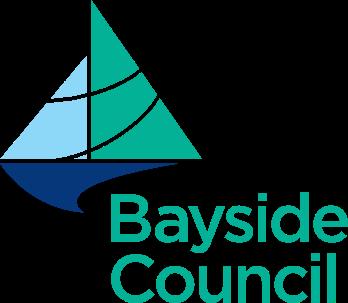
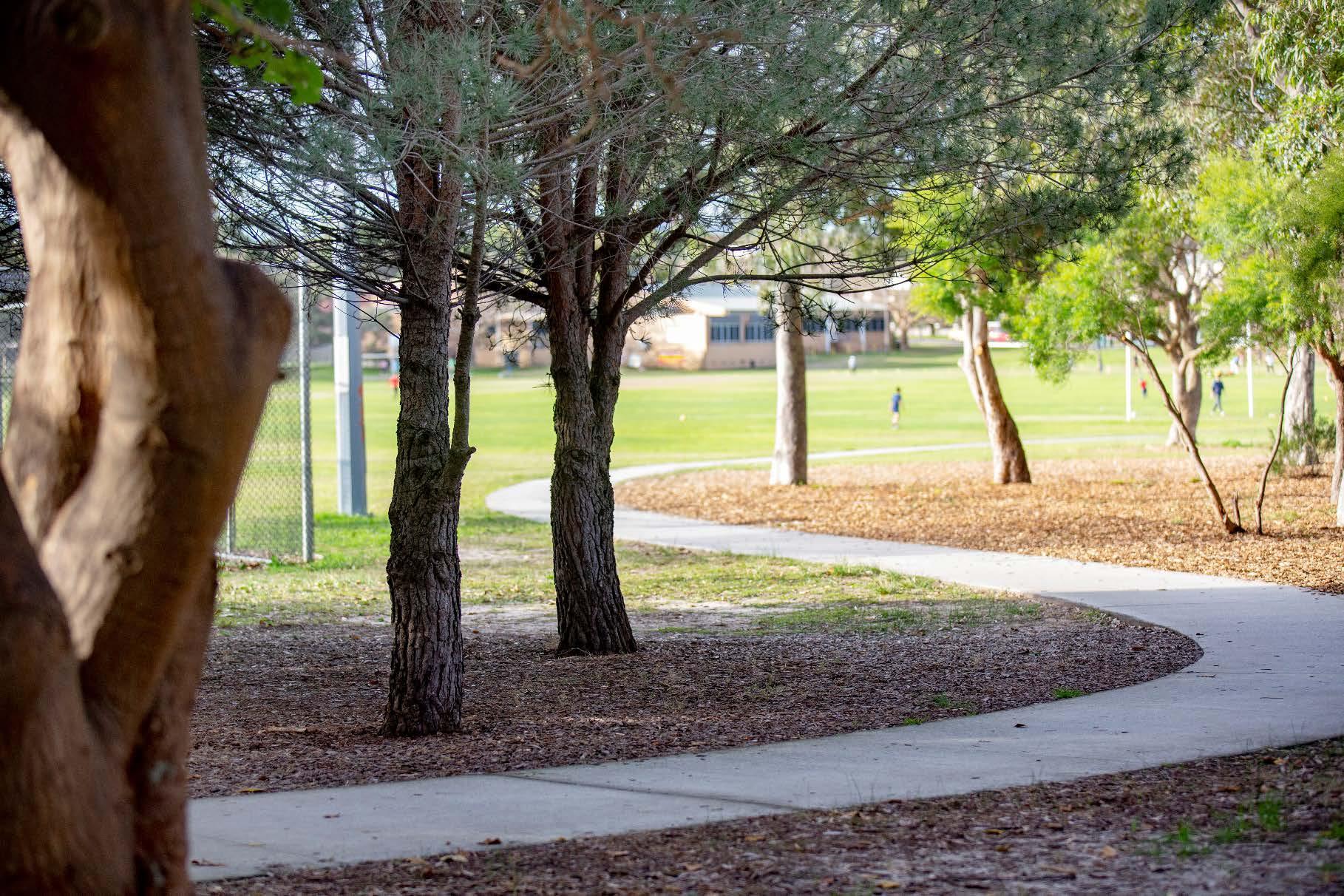

Acknowledgement of Country Bayside Council acknowledges the Bidjigal Clan, the traditional owners of the land on which we meet and work and acknowledges the Gadigal people of the Eora Nation. Bayside Council pays respects to Elders past and present.




Acknowledgement of Country Bayside Council acknowledges the Bidjigal Clan, the traditional owners of the land on which we meet and work and acknowledges the Gadigal people of the Eora Nation. Bayside Council pays respects to Elders past and present.
Council manages over 12,700 open space assets worth circa $204 million that benefit our community. As our region grows and attracts more people, our existing infrastructure wears out, increasing the demand for new and improved Open Space assets. Council’s key role in the provision of open spaces and open space assets is to provide suitable places for the community to meet for social, leisure, recreation, sports, cultural and educational activities. They are an essential component of lifestyle, wellbeing, and recreation
Bayside Council Open Space assets consist of a diverse array of parks, reserves, and playing fields which incorporate playgrounds, seating, tables, barbeques, bubblers and paths. They are an essential component of lifestyle and recreation. Open spaces and open space assets within Council are highly valued and recognised to provide opportunity for people to meet, gather and socialise. They support healthy living and have been shown to have benefits in relation to positive mental health and wellbeing. Well-planned open spaces enhance liveability for residents and visitors, providing a range of activities and interests within the open space network for the whole community
The Asset Management Strategy is the overarching document that identifies assets that are critical to Council’s operations and outlines risk management strategies for these assets. It includes specific actions required to improve Council’s asset management capability and projected resource requirements and timeframes
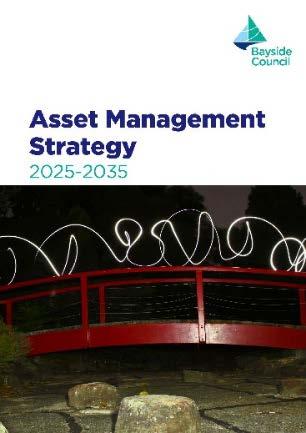

This Asset Management Plan (AMP) provides information about open space infrastructure assets and actions required to provide an agreed level of service in the most cost - effective manner, while recognising associated risks. The Plan outlines Bayside Council’s commitment to best practice asset management and supports informed investment decisions. It provides a framework for managing public open space assets to sustainably meet both current and future community needs.
The AMP details how Council balances capital and maintenance needs, manage growth, and deliver services that meet community expectations. It also covers asset management, regulatory compliance, and funding needs to maintain service levels.
The AMP aims to support evidence - based decision making, improve community and Council engagement and connect asset costs with service levels. By addressing challenges and risks, the AMP ensures better use of assets and more informed community involvement. This AMP provides expenditure forecasts to guide Council’s future maintenance, renewal programs and capital projects, impacting long-term financial planning and annual budgets.
Located in the heart of Sydney, Bayside stretches over 29 suburbs including Bexley, Kingsgrove, and Carlton in the west; Banksmeadow, Hillsdale, Pagewood, Daceyville and Rosebery in the east; Wolli Creek and Turrella in the north; plus Rockdale, Mascot, Botany, Sydney Airport and Port Botany down to the coastal communities of Brighton Le Sands, Ramsgate, Dolls Point and Sandringham in the south.
We are very proud of our local area and all that it offers. With our many parks, sporting facilities and picturesque foreshore, as we surround Botany Bay (Kamay) with 8 kilometres of beach and parkland, we believe that Bayside is truly one of the best places to live in Sydney
Our significant wetlands provide important corridors for native flora and fauna, as well as places for our community to engage with natural surroundings
Bayside is well served with public transport with two main train lines and several busy bus routes. There are many great schools, boutique businesses, active laneways and precincts and a very vibrant mix of cultures.
Central to the area is the logistics core of NSW. Bayside has two major international transport hubs, the Sydney Kingsford Smith Airport in Mascot and Port Botany, the largest container port in NSW. These areas are significant as they enable people and products to travel around the world and to come to Australia. Goods arriving at our ports are transported right around the country and Sydney is the busiest airport in Australia. Our local economy will mature as innovation and growth takes advantage of these opportunities.
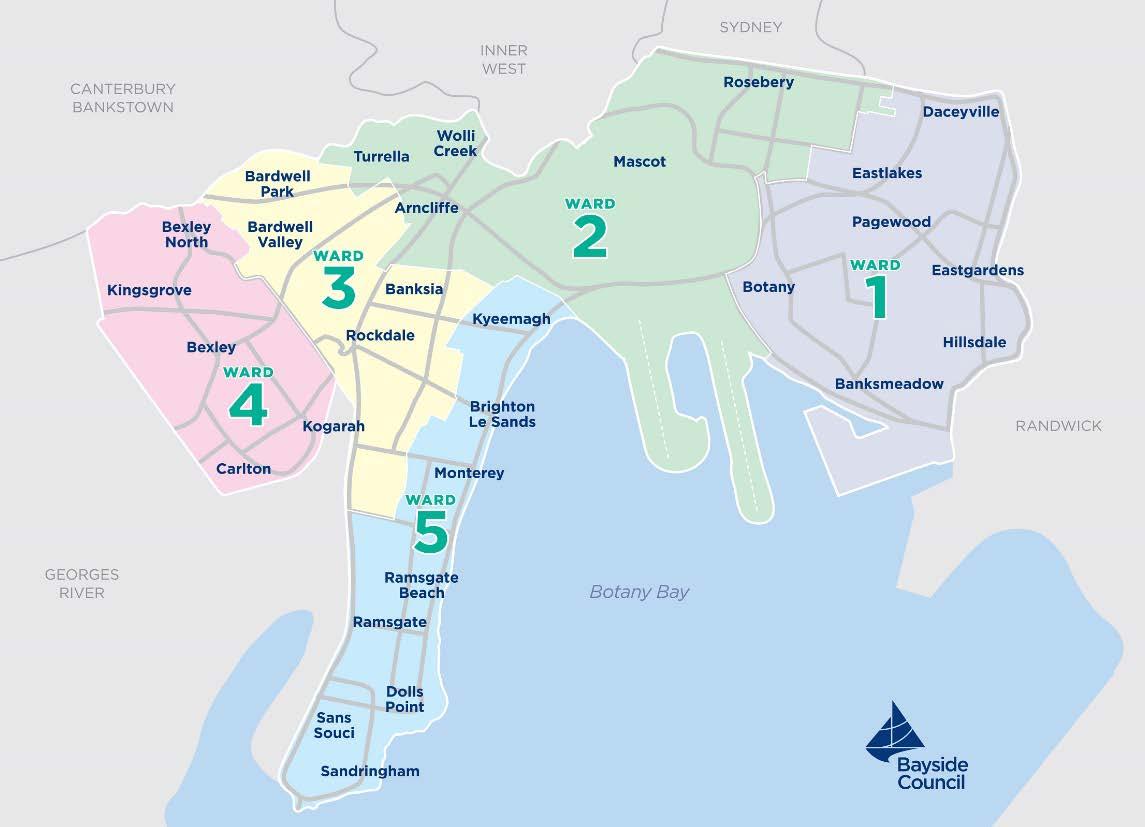
Almost 183,000 residents live in Bayside and this is expected to increase by 30,000 by 2036. Bayside is home to a diverse community hailing from Australia and all over the world, almost half born overseas. People of all ages enjoy life in Bayside, many speak a language other than English at home. First Nations people have lived on the shores of Botany Bay (Kamay) for tens of thousands of years
All of these different cultures enrich our area with their traditions, celebrations and stories. Following are some statistics that demonstrate that diversity.
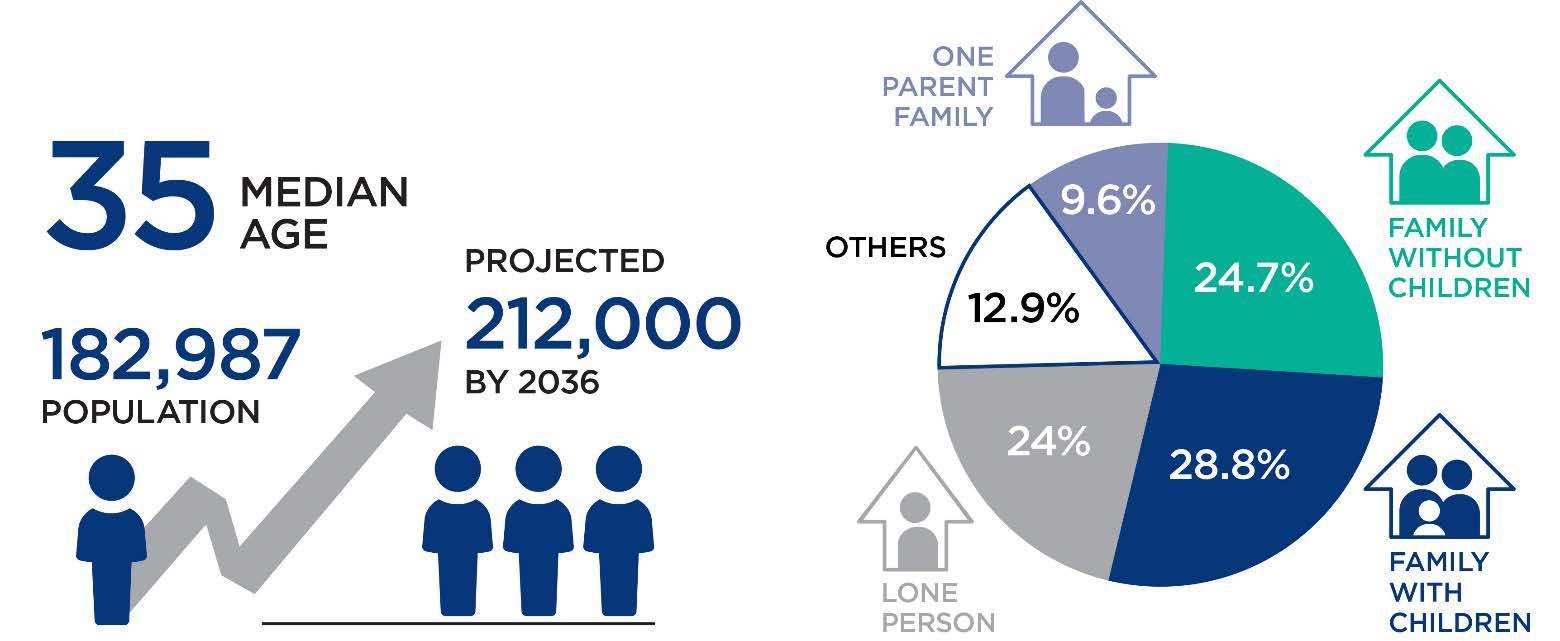
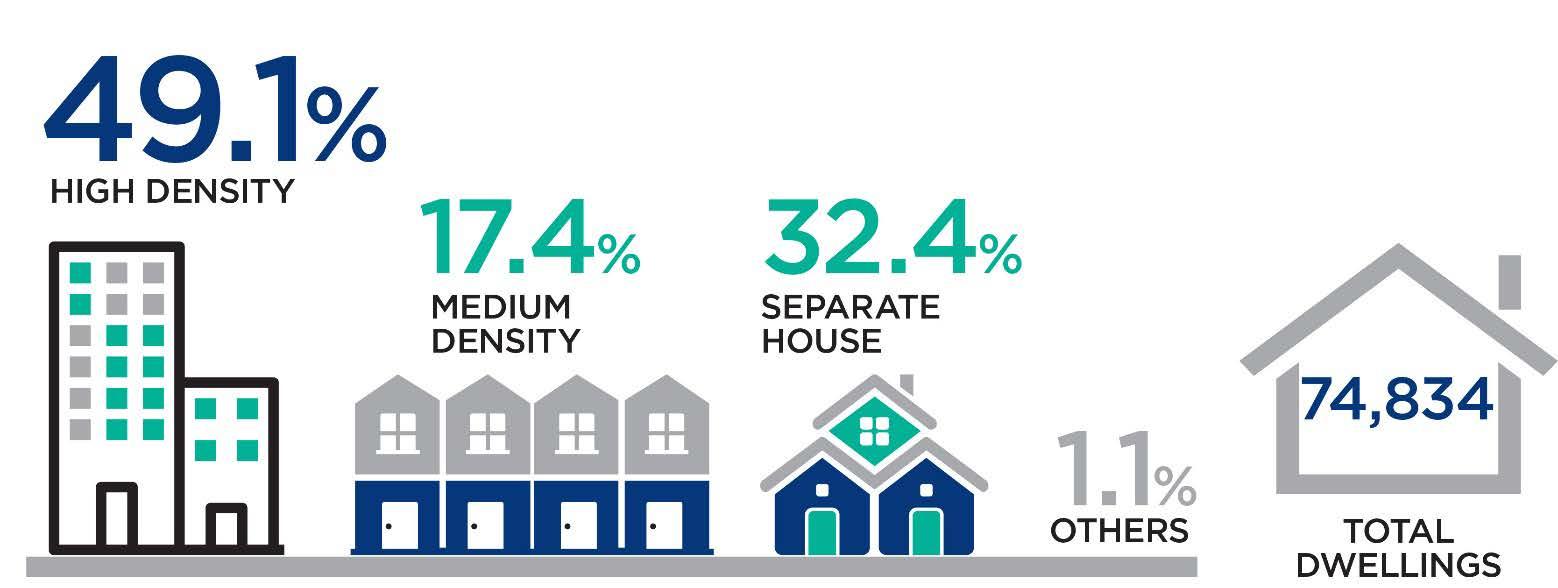
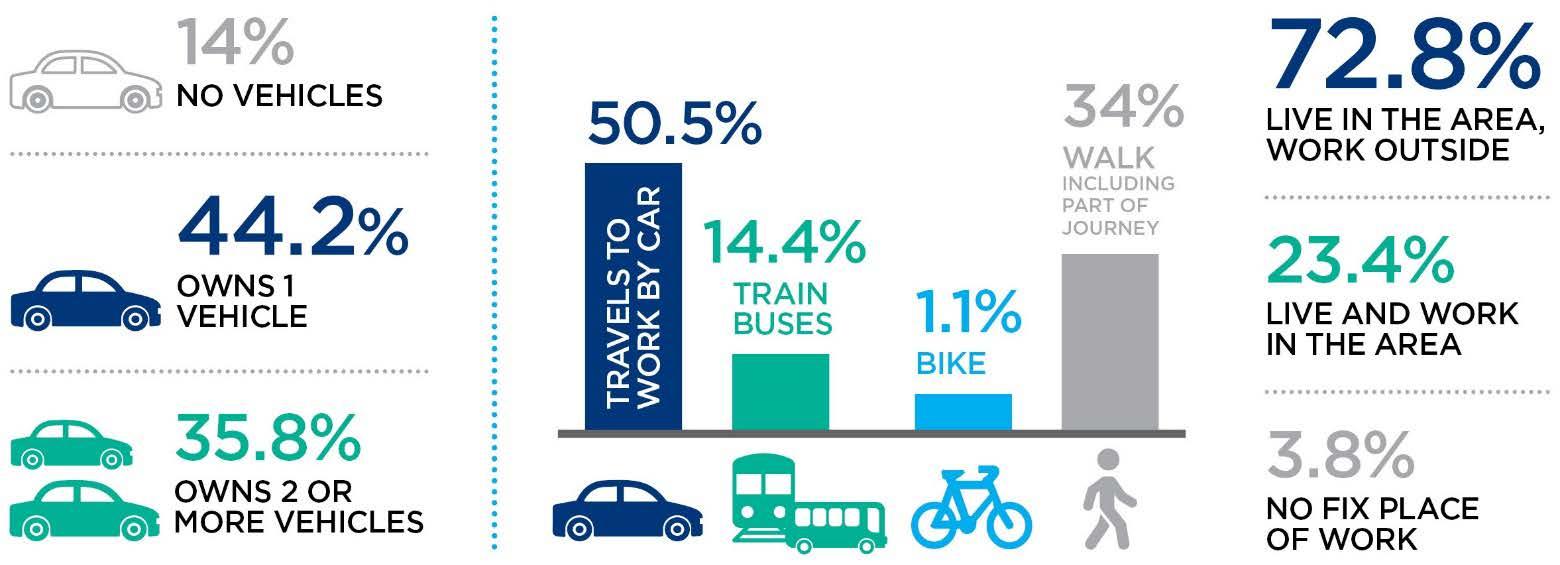
In 2036 we will be
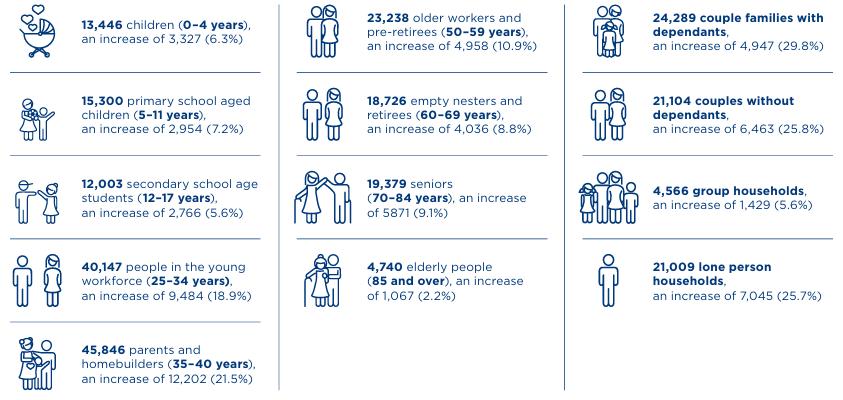
Source Profile ID, Australian Bureau of Statistics 2021 Census, Household Travel Survey 2019
The value of open space assets covered by this Open Space Asset Management Plan (AMP) are estimated at $204.4 million as at 30 June 2024 and are summarised in the figure below:
Barbeque Barriers & Edging Bins
Fitness & Play
Irrigation
Lighting
Other Infrastructrure Assets
Figure 1 - Condition by component and value as at 30 June 2024 (1 = very good and 5 = very poor)
Barbeque Barriers & Edging Bins
Irrigation
Lighting
Public
Sports
Other
4 - Open Space Asset Portfolio value distribution by asset type
The figure below provides a snapshot of the overall health of our open space assets by asset hierarchy.
Council manages other open space assets that are not located within a park or reserve, for this reason, they are not included in the table above, however, are covered by this Asset Management Plan. The overall health of these other open space assets is currently 78.2%.
The forecast funding in this plan is based on the modelling scenarios informing the 10 year longterm financial budget, in line with the guiding principles of best practice asset management. Based on the scenarios considered, Council has distributed funds through its Long-Term Financial Plan to maintain open space assets as follows:
Capital Renewal: $71 million over 10 years; or $7.1 million on average per annum.
Operations and Maintenance: $80 million over 10 years or $8 million on average per annum.
New open space assets and upgraded facilities: $14 million over the next 10 years
Further financial scenario details are provided in the forecast funding section. It is envisaged the financial projections will be continually monitored and improved as part of the ongoing management of the open space portfolio.
Balancing East and West Funding allocations
Ageing infrastructure asset base
Balancing community service level expectations against available budgets and affordability
Population growth and demographic shift
Ensuring Open Space assets are appealing, utilised, fit for purpose and sustainable
Improving accessibility, i.e., all ability access, including facilities for people requiring mobility aids to access the beach
The anticipated available funding for Open Space assets projected over 10 years is below. This is circa 55% of the required cost to sustain the desired technical level of service at the lowest lifecycle cost.
Council’s strategies and plans are developed to set the standards and direction for the services and outcomes we deliver. The supporting strategies and plans are crucial in addressing specific issues and/or details on how we are managing important areas of Bayside
The Open Space assets controlled by Council are utilised by a broad cross section of businesses, commuters, the community, and visitors attracted to the area. It is critical that assets are maintained and renewed based on needs identified for and by its users and stakeholders. Asset users are key stakeholders of this Open Space AMP.
The below table identifies stakeholders where consultation is necessary when Council seeks input in relation to the determination of Levels of Service and intervention levels relevant to this AMP.
Elected Council (Councillors)
Executive Team (General Manager and Directors)
Councillors represent the community to ensure needs and concerns are addressed to enable transparent service levels through adoption of the Asset Management Framework (Asset Management Strategy, Asset Management Policy and Asset Management Plans). Setting strategic direction as per the Community Strategic Plan, Delivery Program and other strategic documents and ensuring Council is financially sustainable.
Ensure that the Asset Management Policy and Strategy are implemented as adopted, and that asset management outcomes support Council's Community Strategic Plan and Delivery Program. Ensure that the organisation is financially sustainable, and funds are invested appropriately to deliver community objectives and sustain assets for the services they deliver. Allocate resources to meet Asset Management objectives in providing services while managing risks. Ensure Council decisions are informed by multiple service level/cost/funding model data, risks, information and knowledge on trade-offs for economic, social, cultural and environmental benefits
Strategic Asset Management Committee (SAMC)
Property Business Unit
Strategic Planning Business Unit
Ensure all asset management activities are consistent with the Community Strategic Plan, Delivery Program, Long-Term Financial Plan and Asset Management Strategy and Policy. Monitor and review the ongoing operation (and improvements to) Asset Management activities, in line with Asset Management Plans.
Responsible for managing the leasing and licensing of Council open space assets including amending lease and license agreements. Facilitates payment of rent and enforce repair and maintenance obligations listed in lease and license agreements. Provide input into the implementation of asset management plans and asset renewal and determine future service levels (including future asset usage requirements). Provide fair value assessment of all property acquisition and supply required documentation for asset capitalisation.
On behalf of the lease and licence holders, communicate maintenance and asset condition issues to maintenance providers as required.
Responsible to prepare and perform strategic predictive analysis works to inform Council’s Long-Term Financial Plan and Capital Works Program. Develop long-term strategies to guide the future growth and development of Bayside, including developing the Contribution Plans. Engage in negotiations to secure Planning Agreements that benefit the community, including the acquisition of contributed assets. Ensure third party contributed assets are reported and submitted for capitalisation.
City Infrastructure Business Unit
Maintain the asset register, arranging condition inspections and asset revaluations, and plan for asset renewals. Capitalise new assets and develop and implement Asset Management Plans, policies, and strategies to guide the planning, maintenance, and operation of them. Provide accurate advice, analysis, and reporting to asset users, other Council
teams, and service providers to support decision-making, manage risks, and inform asset performance. Audit, monitor, and assess asset condition to ensure compliance with legislation and asset management frameworks. Develop funding strategies and budgets in collaboration with Finance and apply predictive modelling to optimise asset expenditure. Oversee asset capitalisation, maintain asset data integrity, and ensure compliance with financial regulations.
City Works Business Unit
Operational and Maintenance tasks related to open space and other structural assets to meet agreed levels of service. Managing inspections and repairs in accordance with the relevant Australian standards Delivery of minor asset renewal projects that do not involve complex design input. Responsible for the delivery of asset maintenance programs based on the required service levels of agreement and prepared on the Asset Management Plans. Capture and record work orders undertaken on assets for record management, documentation and supply required documentation for asset capitalisation.
Parks & Open Space Business Unit
City Projects Business Unit
Finance Business Unit
Maintenance and repair tasks of Council’s parks and green space, road soft scapes, and trees to meet agreed levels of service. Responsible for the delivery of asset maintenance programs based on the required service levels of agreement and prepared on the Asset Management Plans. Capture and record work orders undertaken on assets for record management and documentation.
Oversee and manage design, construction, procurement, and project management processes for asset creation and renewal projects. Develop a capital works prioritisation program, and coordinate design briefs to complete the program.
Ensure asset valuations are accurate and develop supporting policies, such as depreciation. Prepare asset sustainability and financial reports, incorporating asset depreciation in compliance with current Australian accounting standards. Report accurately on the status of Council’s infrastructure assets in line with standards and statutory requirements. Collaborate with City Infrastructure to establish best practice procedures for asset service delivery and reporting. Coordinate asset accounting deliverables and initiatives with the asset management team. Prepare the Long-Term Financial Plan and Annual Budget.
Information Technology Business Unit
Internal Auditors
External Stakeholders
Ensure configuration, operation integration and enhancements of the Asset Management Information System aligns with requirements and supports asset tracking, maintenance scheduling, and data analysis. To ensure that the relevant IT systems are functioning and that any data within the systems are secure, and its integrity is not compromised.
Ensure that appropriate policy practices are carried out and to advise and assist in improvements
Community General users of the various activation precincts. Participate in community engagement to determine acceptable levels of services. Provide feedback on services, projects and policies related to asset management.
Maintenance Personnel (contractors)
Ensure provision of the required/agreed level of maintenance services for assets.
Utility Service Providers Agencies that provide utility services eg electricity, gas, water, sewerage, and telecommunications. Service providers are consulted where works on Council assets may impact the assets of service providers.
Landowners Council requires approval for conducting works on land owned by other stakeholders eg Sydney Water, Transport for NSW and other agencies.
State & Federal Government Departments
Periodic provision of advice, instruction, and support funding to assist with management of the parks and sporting grounds Council’s Insurer Insurance and risk management issues.
This AMP has been prepared to demonstrate proactive and responsive management of assets (and services provided from assets), compliance with regulatory requirements, and to communicate funding required to provide the defined levels of service.
Council’s Asset Management Policy guides the management of Council’s assets with a vison to be ‘recognised as a model of excellence and innovation in delivering services to the community through efficient, sustainable, and responsible management of the assets’.
The AMP is to be read in conjunction with Council’s Asset Management Policy, Asset Management Strategy, and the following associated planning documents:
Community Strategic Plan
Resourcing Strategies
Delivery Program / Operational Plan
Over the next ten years we will work towards achieving the community outcomes identified in the Community Strategic Plan (CSP). The CSP is divided into four themes:
Theme One: In 2035 Bayside will be a vibrant and liveable place
Theme Two: In 2035 our Bayside community will be connected and feel that they belong
Theme Three: In 2035 Bayside will be green, resilient and sustainable
Theme Four: In 2035 Bayside will be financially sustainable and support a dynamic local economy.
This AMP is prepared and aligned with Council’s vision, mission, goals and objectives and has been aligned to deliver cost effective, transparent, realistic and affordable service levels in accordance with community expectations. Relevant Community Outcomes from the CSP and how these are addressed in this AMP are detailed in the table below:
Council’s Goals and how these are addressed in this Plan
CSP Community Outcome CSP Strategy
How they are addressed in this AMP
Theme One: In 2035 Bayside will be a vibrant and liveable place
1.1 Bayside’s places are accessible to all
1.2 Bayside’s places are dynamic and connected
1.1.1 Create spaces, places and interactions that are safe and accessible (Deliver)
1.1.4 Maximise safe, accessible open space with a range of active and passive recreation opportunities for all ages and abilities (Deliver, Partner)
1.2.1 Create a green, engaging, walkable Bayside (Deliver)
Provision of 10 year capital improvement programs to reduce asset renewal gap and ensure that assets are fit for intended purpose
Ensure community facilities are safe and fit for use and purpose, accessible for all ages and abilities and well-maintained.
Provision of accessible open space, recreation, and sporting facilities Council is working within the framework of the Bayside Council Disability Inclusion Action Plan (DIAP) 2022-2026 to ensure the goal of making public places and spaces more accessible is integrated into new acquisitions and capital renewal projects.
1.2.3 Facilitate greater connectivity to open space, schools, shops, and services through active transport (Deliver, Partner, Advocate)
Planning for and provision of off road active transport corridors (ATC) through open space areas and on road ATC to link open space areas
1.2.4 Support and deliver cultural and arts facilities, programs, Provision for operations and maintenance supporting community arts projects and flourishing softscapes.
1.3 Bayside's places are people focussed
events, and opportunities (Deliver, Partner, Advocate)
1.3.1 Activate local areas and town centres with facilities valued by the community (Deliver, Partner)
1.3.2 Create and maintain vibrant, visually appealing, and welcoming places with their own village atmosphere and sense of identity (Deliver, Partner, Advocate)
1.3.3 Promote innovative and welldesigned local developments which incorporate open space and put people first (Deliver, Partner, Advocate
1.3.4 Plan for growth and provide infrastructure that will serve our future population as well as our current needs (Deliver, Partner)
2.1 Bayside celebrates and respects our diverse community
2.2 The community feels valued and supported
2.3 The community is united and proud to live in Bayside
Provision of quality and flexible open spaces within or linked to town centres and employment hubs.
Provision of facilities such as sporting grounds, playgrounds, marine infrastructure, and park assets that are fit for use and purpose, accessible, safe, and wellmaintained
Provision of innovative open spaces and facilities with multipurpose assets where possible, designed and built to accommodate flexibility, future growth, and diverse needs
Ensure provision of assets are, where possible, multi-use designed and built to accommodate growth, diverse needs, and future flexibility
2.1.1 Reflect and celebrate cultural diversity in Bayside's activities and events (Deliver, Partner)
2.2.3 Promote access to active recreation, health information and education services to support a healthy community (Deliver, Partner, Advocate)
2.2.4 Provide services and facilities that are safe, functional, vibrant and accessible for our diverse community, and that support volunteer engagement (Deliver, Advocate)
2.3.1 Develop and support community connections and networks which enhance resilience and reduce social isolation (Partner, Advocate)
Assets in open space areas enable and acknowledge multicultural use of parks and event venues with provision of culturally resilient infrastructure and ambience
Supports the provision of assets and inclusive access to and within open space areas that facilitate positive well-being outcomes.
Council to engage with the community in deliberative consultation for active decision making in respect of all project works including renewal projects
Provision of open space areas and assets that provide opportunities for relaxation, fitness, community interaction and socialisation.
3.1 Bayside is resilient to economic, social, and environmental impacts
3.3 Bayside's waterways and green corridors are regenerated and preserved
3.1.1 Build community capacity and resilience to prepare for, cope with, adapt to and recover from economic, social, and environmental impacts (Deliver, Partner, Advocate)
3.3.1 Expand Bayside’s carefully selected and well-maintained tree canopy (Deliver)
3.3.2 Involve community in the preservation and growth of natural habitat and biodiversity (Deliver, Partner)
Selection of robust and sustainable materials and construction techniques is to preserve and extend asset life, particularly in foreshore precincts
Needs recognised and reflected in future Service Frameworks. Adoption of risk management principles in the development of maintenance standards.
Provision for maintenance of assets that supports and protect the foreshore, bushlands, waterways, wetlands, and wildlife protection areas
3.3.3 Enhance and extend green grid corridors (Deliver, Partner, Advocate)
3.3.5 Respect, manage and protect the natural environment, including our fragile coastlines (Deliver, Partner)
Capital Upgrade and Renewal Service Levels include green corridor measures
Asset Maintenance Service Levels include coastal protection measures Theme Four: In 2035
4.1 Bayside generates diverse local employment and business opportunities
4.2 Bayside supports a diverse and adaptive business community
4.1.1 Encourage and support improved employment outcomes for First Nations peoples, CALD community members and people living with a disability (Deliver, Partner, Advocate)
4.2.1 Grow the local visitor economy connected to the cultural significance of Kamay / Botany Bay, Bayside's unique natural features, and supported by Bayside as a transport hub (Deliver, Partner)
Asset Capital and Maintenance Procurement policies support CALD.
Provision of connectivity and ambience through systematic planning and maintenance of open spaces and assets to attract visitors
4.3 Council is financially sustainable and well-governed
4.3.1 Ensure Council decision making is transparent, and data driven (Deliver)
4.3.5 Manage Council assets (including digital) to meet community expectations within available resources (Deliver)
4.3.6 Manage Council finances for the long-term benefit of the community and to prioritise infrastructure funding commitments (Deliver)
Data collection is core activity and informs revaluation cycle
Adopted Levels of Service allow Council to define its service requirements and ensure they are met by new infrastructure developments
Through this Plan and associated deliberative engagement a range of scenarios have been considered for long-term benefits
Council delivers essential services to the community, many of which depend on a diverse portfolio of Open Space assets. Understanding the condition, performance, costs, and risks associated with these assets helps us prioritise maintenance and management to meet community needs. Council Open Space Assets are categorised into classes to address their unique challenges. We assess asset performance not only in the present but with a long-term view to ensure sustainability and reduce future burdens. This section presents the anticipated performance of our open space asset portfolio over the next 10 years.
The best practice approach to open space asset management integrates a whole of life methodology. This ensures that benefits, risks and costs associated with all open space assets are monitored and planned for over their predicted lifespan. This approach is based upon:
Development and management of the open space asset register ongoing
Periodic inspection of all open space assets to monitor and manage performance and function of individual assets
Operational planning to ensure required operational tasks, activities at desired quality standards are scheduled and carried out to ensure that individual assets reach at a minimum the predicted useful life of the asset category
Refer Asset Technical Standards - Infrastructure and Structures Asset Useful Life for the predicted useful life of individual open space asset categories.
This Plan covers all open space assets which are owned or managed by Council, approximately 12,764 assets as classified by their asset class (asset function). A detailed list of all the open space assets for which Council has included in this AMP are recorded in Council’s Asset Register. Open Space furniture items managed by Council include bicycle facilities, bins, open space poles, seats, security devices, shelters, signs and open space tables








A summary of Council’s financial values for the open space asset portfolio for the financial period 30 June 2024 is detailed in Table 3 below.
Table 1 - Assets Valuations of 30 June 2024
Asset Health is a measure of the remaining useful life of the asset portfolio. The figure below displays the current asset health by asset hierarchy for the open space portfolio.
Council manages other open space assets that are not located within a park or reserve, for this reason, they are not included in the table above, however, are covered by this Asset Management Plan. The overall health of these other open space assets is currently 78.2%.
Heritage Listed Parks
Council has 16 heritage listed parks within the Open Space portfolio, the majority of which have existing Conservation Management Plans (CMP’s). A CMP is a guide on the heritage significance of the park and components, how to repair and maintain the existing fabric and ensure the ongoing heritage significance of these components. The types of heritage listing are as follows:
Local: A local heritage listing recognises the place has significance to the local government area and community.
State: The State Heritage Register lists our State's most significant heritage places and objects known as items of state heritage significance.
National: Nationally significant places are listed on the National Heritage List. Examples of Bayside’s heritage park assets are below:
Cook Park
Arncliffe Park and monument
Gardiner Park
Barwell Park and Botanical Gardens
Bexley Park
Scarborough Park
Sir Joseph Banks Park Booralee Park
Dacey Park and Garden
Mascot Memorial Park
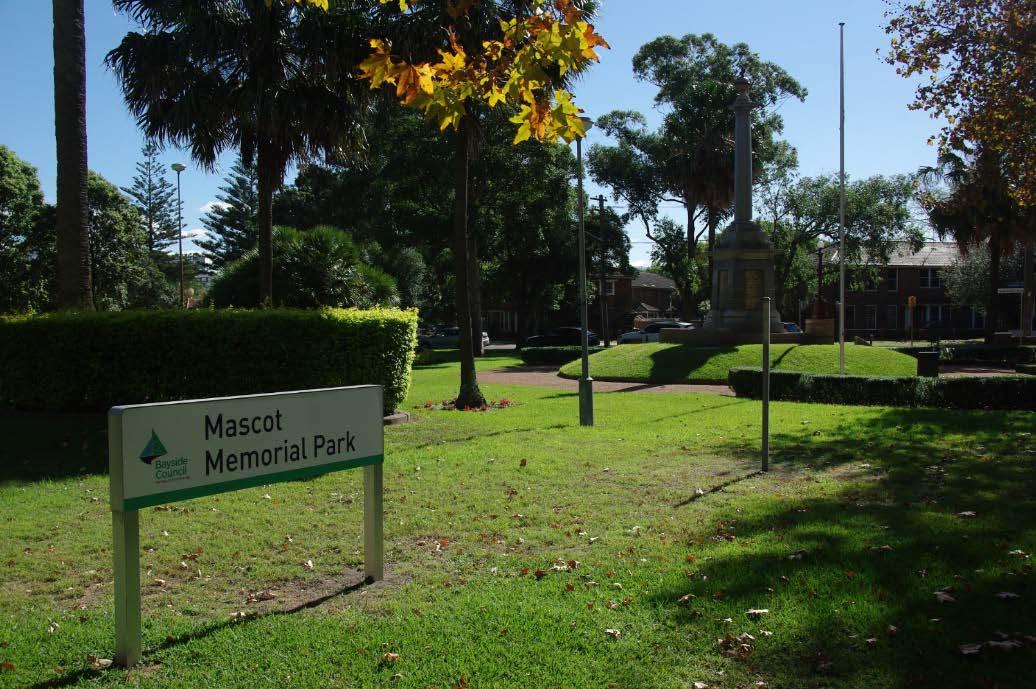
Bayside is obligated to protect its heritage items which may be registered as open space assets. Some of these assets may have specific considerations in terms of management and further development of the open space areas within which they belong.
Bayside is responsible for appropriate management of contaminated lands which may be located within community open space land parcels. This involves compliance with contaminated land management principles when planning for allowed / prohibited activities on affected open space land parcels and implementation of maintenance responsibilities to ensure that required depth of ground cover is constantly retained.
Synthetic Sports Fields
Council has 7 synthetic sports fields within the open space portfolio. Where there is no lease or license agreement over the sports fields Council manages and funds the maintenance and renewal of the fields from the Synthetic Field Reserve. The synthetic sports field locations and renewal timeframes are detailed below in Table 4.
Synthetic Field Reserve
Ador Reserve
Bicentennial Park
Arncliffe Park
Brighton Memorial
McCarthy Reserve
Gardiner Park
Hensley Athletic Field
2028 - 2030
2028 - 2030
2030 - 2032
2031 - 2033
2031 - 2033
2032 - 2034
2032 - 2034
Table 2 - Synthetic Sports Field locations and renewal dates
The AMP excludes open space assets owned and maintained by other authorities such as the Department of Planning and Environment NSW (DPIE), Transport for NSW (TfNSW), Sydney Water, and the like.
Within Bayside larger open space areas generally service a greater portion of the community at one time and provide a wider range and potentially higher quality of facilities to accommodate broader usage and longer stay visitation. Smaller open space areas typically provide more localised services for community within smaller and localised catchment areas. It is proposed that Council utilise a Level of Service (LoS) hierarchy that classifies the Open Space asset portfolio into various levels of service delivery, based on the current function and criticality of the individual asset.
An open space hierarchy is in development and has been applied to categorise the variety of open space areas based on geographical catchments, current function, and criticality of the individual assets. Table 5 provides a summary of these hierarchies as it applies to open space assets and is detailed within the Open Space Hierarchy Framework. The Framework aims to ensure that residents have fair and equitable access to a variety of recreation facilities and services across Bayside. It also aims to guide Council in delivering a balanced provision of open space assets against provision benchmarksminimising any imbalance in gaps and over provision of service delivery within recognised geographic catchment areas.
Table 3 - Open Space Assets Hierarchy Framework
Regional open space hierarchy
District open space hierarchy
A large open space area with diverse and significant infrastructure that attracts and services people from across and beyond Bayside due to its location, size, uniqueness, quality or focus of the activity. Typically, significant open space areas with high value recreation and organised sport spaces and/or significant conservation and/or environmental features.
Large open space areas with diverse infrastructure that attracts and services people from multiple neighbourhoods or whole suburb in Bayside (ie clusters of suburbs identified by Council as connected areas) due to the size, quality or function of the open space.
Concurrent uses including organised sports, children’s play, youth activities, picnicking, social gathering, exercise, walking, running, cycling, dog walking, protection and enjoyment of natural features.
Concurrent uses including organised sports, informal active sports, children’s play, youth activities, picnicking, dog walking, social gathering, exercise, opportunities for organised activities such as community gardens.
Neighbourhood open space hierarchy
Local open space hierarchy
Medium open space areas with basic infrastructure that serves as the recreational and social focus of a community, either multiple residential blocks or a suburb due to its size, appeal and facilities.
May include bushland / natural area values or be used for junior / informal sport or sports training if space is available.
Small open space areas with limited infrastructure that serves the immediate residential population / part suburb and does not typically attract people from a wider catchment. Unlikely to be used for organised sport activities. Often functions as a social focus for small communities.
Concurrent uses including organised sports, informal active sports, children’s play, youth activities, picnicking, dog walking, social gatherings, individual activities, opportunities for organised community activities.
Various concurrent uses including children’s play, social gatherings, relaxation and rest area, exercise, dog walking.
All information pertaining to asset type and function, location, commission date and condition of these assets are recorded and stored in Council’s Asset Register, which is a module of the Finance System.
The condition for all asset classes is reported using a 1 to 5 rating system (IPWEA, 2015, IIMM, Sec 2.5.4, p 2|80) as shown below in Figure 14.
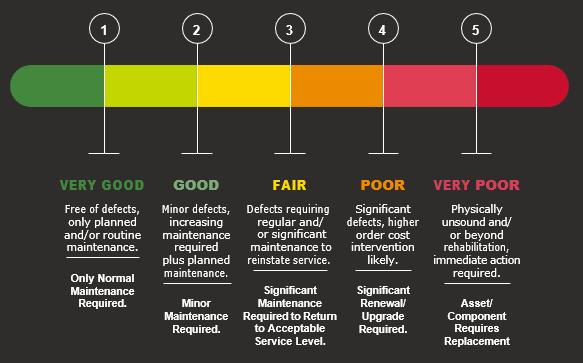
Figure 8 - Asset Condition Assessment Rating
Bayside has adopted this condition assessment framework based on IPWEA guidelines and used it to assess the Bayside wide asset network condition.
Barbeque Barriers & Edging Bins
Fitness & Play
Irrigation System
Lighting & Electrical
OS Furniture
Public Artwork
Sports Facilities
Tidal Enclosures
Other Infrastructrure Assets Condition 1
Figure 9 - Asset Condition Distribution by Asset Class - Condition distribution by asset element / component by Current Replacement Cost as at 30 June 2024
Assets that do not currently meet the standards and expectations for performance, with respect to the services they provide, are known to have service deficiencies. Assets with known deficiencies in service performance are detailed in Table 6.
Play spaces, Fitness, Dog Exercise areas
CCA timber assets
Hydration stations
Inclusive access to older facilities lacking. Connections included in new and renewal projects.
No longer preferred material component and now deteriorating with age. Alternative materials being used in new and renewal projects.
Aged drinking fountains do not provide appropriate drainage, inclusive access, or use, or offer drink bottle refill options or dog bowls desired by community. Contemporary units with these options.
Shade structures
Aged play spaces lacking structural shade. Provision included in new and renewal projects. Community desire for shade at fitness facilities expressed post installation of new projects.
Park lighting Park lighting lacking in open space areas which provide for commuter access, fitness facilities, dog exercise areas and play spaces where community desire extended use in short daylight hours mid-year period
Beach showers / foot wash
Lack of inclusive access and usability associated with older assets. Community expression of service deficiency along foreshore.
Table 6 - Known service performance deficiencies
Council undertakes Community Satisfaction Surveys to better understand how we are perceived by our community. The survey measures satisfaction with Council’s leadership and its delivery of services and facilities and identifies issues of concern within Bayside.
In 2023, 31 of the 50 services / facilities received a ‘good performance’ score, with 86% of residents at least somewhat satisfied with Council’s performance in that area. Overall, 90% of residents rated their quality of life as ‘good’ to ‘excellent’. 91% of residents think ‘support for vulnerable community members’ is a priority, followed by sports and recreational facilities (82%), playground (81%) and youth services (81%). Library Services (68%), local community centres and halls (67%) and public art and cultural development (57%) were considered a lower priority.
Figure 16 illustrates the satisfaction with Council’s overall performance measured in 2019 and 2023.
16 - Community satisfaction with Council’s overall performance
The survey indicates that there has been an improvement in satisfaction with open space services in the Bayside area. This reflects upon the new
projects and open
renewal works undertaken
Toilets and access for people with disability are considered most important in terms of the space being functional. Bayside residents top 5 most used spaces are shown in the following graphic:

Figure 10 - Bayside’s top 5 most used spaces in 2024
Residents want to be better informed and consulted on key local issues. Effective communication and transparency with residents about decisions Council has made in the community’s interest provides the greatest opportunity to drive up overall opinion of Council’s performance.
A service centric approach starts with determining what services are needed and aligning assets to those services. At Bayside Council, Open Space assets need to be located in the most appropriate locations for future community use, they must be functionally adequate for future demographics and consider demand and Council’s vision. This approach also prioritises capital and maintenance spending based on service criticality and considers repurposing or relocating services to manage budgets effectively.
In 2020, Council ’s Local Strategic Planning Statement (LSPS), outlined a vision for Bayside’s growth through to 2036, focusing on community and social infrastructure. To support this growth, high quality, flexible, and well-located open spaces, recreation and community facilities are essential for a healthy, active, and vibrant community.
The LSPS guides Council’s planning and decision - making regarding community infrastructure, prioritising projects based on community need, available funding, and emerging opportunities.
Bayside is committed to providing accessible and sustainable social infrastructure to foster a connected and resilient community.
Bayside is preparing Strategies and Plans to guide the location, scale, and character of its open spaces. We want to create and enhance places, so they provide enough sunlight, are easy to get to and where streetscapes and parks are pleasant places to walk, relax and play. Key documents used to guide development are the Local Environmental Plans, Development Control Plans, Masterplans and Park Plans of Management. Bayside currently has the following 11 Plans of Management:
Cook Park Plan of Management
Sir Joseph Banks Park Plan of Management
Mascot Oval Plan of Management
Hensley Athletic Field Plan of Management
Muddy Creek Plan of Management
Cahill Park Plan of Management
City of Botany Bay Local Parks Plan of Management
City of Botany Bay Formal Gardens Plan of Management
City of Botany Bay Pocket Parks Plan of Management
Bayside Community Land and Open Space Plan of Management
Crown Lands Plan of Management
The levels of service considered by Council have been documented considering the expectations of Council’s residents / users and visitors to Bayside. Levels of service can change over time with demand and demographics, so Council will continually review and update these as required in future AMP iterations.
The levels of service defined are intended to:
Inform the community and Council of the proposed type and level of service to be offered.
Enable community and Council to assess suitability, affordability and equity of the services offered.
Measure the effectiveness of the services provided by Council.
Identify the costs and benefits of the services offered.
Council’s defined levels of service that have been adopted as a result of this AMP, are tabulated in the table below as follows:
Community Level of Service (CLoS): Driven by deliberative Community engagement
Technical Levels of Service (TLoS): Driven by Strategic analysis, intervention levels, balancing cost, risk and performance against future community outcomes
Table 7 provides a summary of Customer Level of Service indicators, measure, and current performance.
Table 4 - AMP Levels of Service
Safety (Risk) Provide safe and accessible public open space assets
Safety (Risk)
Safety (Compliance)
Reliability (Availability and Accessibility
Open space assets are routinely inspected for hazards and risk
<1% assets with high or very high - risk rating > 80% community satisfaction (based on satisfaction survey).
No. of reportable incidents due to asset defects per year <= 2.
Compliance - Playgrounds Play spaces designed, constructed, and maintained in compliance with respective Australian standards.
All playground assets and condition ratings are recorded in up-to-date asset register.
Nil recorded.
Independent post installation inspections completed as part project completion, and handover.
Functionality
Open space assets are accessible and reliable 95% of the time during normal operating business hours
95% Compliance. In the instance where an Open Space (eg park or sportsground) is closed to users for reasons such as maintenance, upgrading, renewal or a Council related public event or non - Council events, then appropriate notification shall be given to relevant users in accordance with Council’s public information policy.
Nil unplanned closures.
Assets provide intended service and meet diverse needs of community
Assets meet community needs at least 3 out of 5 community satisfaction survey.
Ongoing improvement of inclusive access to open space areas and assets in new and renewal projects.
Responsiveness Responsive to customer requests, Service requests responded to within SLA’s 90% of the time
Comfort
Well-maintained and suitable open space assets
> 70% of all requests adequately responded to within target.
Renewal works undertaken within 1 year of their deemed intervention date 90% of the time.
Data to be collected and reported annually.
Ongoing programming for poor condition asset renewal where services deemed appropriate / still required;
Some older assets waiting for direction from pending masterplans for individual open space areas.
Quality
Well-maintained and suitable passive and active open space infrastructure assets
Climate Adaptation Perception of Climate Change responsiveness % Satisfaction
<100 requests / complaints per annum for renewal and maintenance requests.
Data to be provided and reported annually.
A commitment to continually improve environmental efficiencies and promote sustainability.
>90% Climate adapted Infrastructure (*where climate resilient infrastructure requirements are met) NB: Example, TBC.
Use of resilient and sustainable materials in asset specification and selection.
Ongoing provision of shade structures over play equipment and natural shade in play environs as part of play space renewal projects where able to be installed.
Ongoing use of / renewal with robust assets with long useful life expectancy; Inclusion of multi - purpose assets to achieve more services with less assets
** NB: Climate Adaptation Strategies may need to be incorporated into next iteration of the AMP
To ensure that Community Levels of Service are achieved, the Technical Levels of Service describe Council’s Decision Logic to allocate maintenance or capital actions (including new and upgrades).
Council has listed guidelines containing this decision logic within its Enterprise Asset System. It details the following:
1. The task or work expected to be undertaken, eg repair broken playground equipment;
2. The schedule of inspections to be undertaken of specified matters at specified intervals
3. The circumstances under which intervention action is to be taken with respect to repair or maintenance / capital
4. The priority to be given to assets and associated intervention level;
5. The type of priority intervention action that will be carried out;
6. Provision, as far as practicable, for the unpredictable, ie emergencies, natural disasters; and
7. Cost rates required to deliver the specified maintenance and capital works.
Responsibility for immediate dangerous situations with respect to its assets, is initially assessed or undertaken by Councils operational staff or the after - hours response team.
This AMP acknowledges the importance of understanding and monitoring the linkage between workload indicators and intervention actions. A substantial increase in area to be maintained can materially impact upon intervention action (and community satisfaction and duty of care requirements) if not accompanied by a comparable increase in budget allocation or productivity improvement.
Given the outcomes of an internal deliberation with respect to Council’s maintenance and capital works, the Levels of Service as detailed in in this Asset Management Plan above are considered reasonable and meet community expectations in the context of responsible asset management.

This section identifies the anticipated effect of expected growth and consequent demand on Council’s open space assets. Forecasting future demand is essential in determining lifecycle management for assets. The management of open space assets is directly affected both by growth in the number of assets and growth in the resident population as well as visiting populations.
Drivers affecting asset demand, include factors such as population change, changes in demographics, technological changes and environmental changes. In the absence of comprehensive service strategies, population trends can be used as a guide to ascertain future demand.
2024
186,985
Current Population
2041
234,600
Projected Population
It is envisaged that over the next 10 years, there will be significant population growth across Bayside, with a projected change of 25% 1, growing at over 2% per year. Some of the areas projected to have the largest increases in new dwellings include Rockdale, Arncliffe, Wolli Creek, Mascot, and East Lakes. The heightened demand for services will increase proportionally with the predicted population growth and utilisation of the surrounding open space and recreational facilities.
Census data highlights a growing and more diverse population. Meeting the recreational needs of this community requires flexible spaces that encourage shared use, social interaction, and minimise conflict. New transport links, revitalised commercial areas and upgrade of the Botany Aquatic facility will draw both people and businesses to Bayside.
Demand factor trends and impacts on service delivery are summarised in Table 8.
Table 5 - Demand Drivers, Projections and Impacts on Services
Increase of population and population density at a rate of approximately 0.6% per annum over the following 5 years
Growing number of families in the area.
Increased utilisation of open space assets will be expected, proportional to population growth.
Increased need for open space and open space assets to cater for changing patterns.
1 Source: Community Profile.id Community
Climate change will see an increased risk of extreme weather events including storm events, heatwave, flooding, sea level rise, and fire events.
Sustainability
There will be an increase in structural damage caused by extreme events and increase in deterioration rates of open space assets. Increased wind speeds and urban heat islands will have an impact on the facilities. Introducing climate risk assessments will determine the impact on asset performance and useful lives.
Use of new sustainability technology when introducing, renewing, and upgrading assets will ensure cost savings.
Supporting local sporting clubs Sporting clubs can be supported to more effectively use sporting grounds to which they have access. There are opportunities for Council to continue to assist with scheduling training sessions and matches between and within clubs to maximise efficient usage of all facilities while minimising damage that can occur with unmanaged overuse.
Council is continuously monitoring new assets and asset treatments that may be available to increase the useful life of its open space assets. Table 9 details technology changes that are forecast to affect the delivery of services covered by this plan.
Table 6 - Changes in Technology and Forecast on Service Delivery Technology Change
Improvement in techniques and materials
Low energy design
Changes in methodology, longer life materials and improved rehabilitation techniques enable assets to be maintained and managed more cost effectively, with a potentially longer useful life.
Increased efficiencies of low energy design for new / renewal open space projects - for example lights can incorporate energy efficient and sustainable technology.
Solar Power Reduction in greenhouse gas emissions with consideration of solar panels when installing new lighting or replacing existing lighting.
Asset Information System
Material
Improved information systems for mapping, recording information and managing assets. Adjustment of the inspection regime to match the amount of community usage and fatigue impact on assets.
Use of robust materials with longer useful asset life and lower maintenance needs. Moving away from timber, especially CCA treated products, to materials which are more acceptable and offer longer asset life.
Smart City Technologies Smart City technologies to be further investigated and trialled where appropriate.
These technological factors need to be assessed in determining the scoping requirements for maintenance works, renewal, upgrade and new park and sporting ground projects. There will be changes to asset management technology, in particular the monitoring and data collection roles. These upgrades in technology may require consideration of modifications to service levels as and when appropriate.
Council has identified the following potential climate change impacts and Council’s response to them with respect to the open space portfolio.
Increased Urban Heat Islands (UHI)
Increasing UHI will result in temperature increase which will decreases the life expectancy of the asset material requiring Council to increase the renewal frequency
Increase renewal frequency
Investigate UHI mitigation strategies including more robust materials
Increase in extreme weather events
Irregular rainfall / drought (Often in coinciding with the El Niño climate cycle)
Higher global temperatures leading to extreme weather events
Sea level rise
Climate change will see an increased risk of extreme weather events including storm events, heatwave, flooding, sea level rise and fire events.
There will be an increase in structural damage caused by extreme events and an increase in deterioration rates of assets.
Risk of flooding will increase deterioration and reduce serviceability.
A drier climate is anticipated over the long term.
Climate risk assessment will determine the impact on asset useful lives
Investigate mitigation strategies.
Extreme weather events have the capacity to negatively impact assets and services across Council’s entire asset portfolio.
Higher sea levels could potentially impact existing open space and open space infrastructure.
Introducing new resilient technology when renewing and upgrading open space assets will ensure climate resilient infrastructure is put in place
Include increased cost of water in the operations budget.
Include water harvesting & water storage infrastructure as optional extras when considering future capital renewal works.
Council is looking at ways to reduce our overall carbon footprint by installing alternate clean energy sources to power open space assets (Solar and battery storage solutions).
Identify areas that are likely to be negatively affected, establish a strategic plan to construct resilient infrastructure assets to mitigate the effects of sea level rise into the future.
Council envisages that over the following 10 years, it will acquire new assets and construct new open space facilities to meet demand needs. An additional $50 million has recently been spent on upgrading the Barton Park Recreational Precinct which is now open to the public.
As additional information becomes available with regards to new growth and development areas, Council will continue to identify the community infrastructure needs via strategies and masterplans, and these will be included in future revisions of this AMP.
It is important to note that when new assets are acquired, or assets are expanded or upgraded, this results in an increase in commitment of annual operational and maintenance funding to ensure continued service delivery of the asset over its lifecycle.
This AMP notes that an additional 8.6% of assets will be added to the open space asset network over the next 10 years. This growth will require an additional 9% in maintenance and operational expenditure. This projection is based on best available data for future maintenance and renewal needs from growth.

It has been identified that demand for open space and open space assets will increase proportionally with the predicted population growth and demographic changes within Bayside. This aligns with feedback from community surveys which identify that open space assets are of high importance to the community.
Demand for new services will be satisfied with a combination of managing existing assets, upgrading existing assets and providing new assets. Demand management practices include non - asset solutions, insuring against risks and managing failures. Table 10 lists opportunities identified to date to provide demand management. Further opportunities will be developed in future revisions of this AMP.
Increased patronage and usage of open space assets expected to be proportional to population growth.
Encourage sharing existing open spaces to maximise utilisationallows planning for optimum use of all public and open space assets.
Fund priority works. Continue to seek grant funding for identified projects.
Analyse and improve understanding of the cost of providing services and the capacity to fund and maintain at the current level of service
Review existing facilities to ensure continuing need and suitability
Plan for construction of multi - use assets where possible.
Increased population density will result in increased usage of open space assets.
Undertake strategic planning to identify the change in service demand across all services, who will use the services, and identify the best location for future services.
Service Planning is used to identify the best mix of provision and development to provide the best possible services at a sustainable level, which can include some shifts in service levels (both up and down) across Bayside.
Identify programs that support the aged and youth as alternatives to infrastructure related activities.
Increased need for maintenance and renewal costs
Community awareness
Review and document levels of services after consultation with the Service Managers and the community.
Incorporate total asset lifecycle costings into asset management
Monitor community expectations and communicate service levels and financial capacity with the community to balance priorities for infrastructure with what the community is prepared to pay for.
Inclusion of information brochures with other correspondence provided to the community, such as rates notices, or the website.
Partnerships
Anticipated increase in structural damage and deterioration rates of assets caused by extreme weather events.
Climate risk assessment will determine the impact on asset useful lives.
Council continues to seek opportunities to share facilities with private landowners and other levels of government to maximise the number of sporting ovals, and other facilities available for community use and to meet short to medium term demands in a sustainable manner.
Develop a Council specific Climate Change Policy.
Include environmental policies and considerations in open space planning and capital works.
Apply for available government environmental subsidy and funding programs.
Monitor developments and potential impacts on asset management.
Identify opportunities for water harvesting and recycling for irrigation purposes.
This section of the AMP identifies the processes required to effectively manage, maintain, renew, and upgrade Council’s open space assets.
Minor defects occur within the open space asset portfolio over time. Council addresses the repair and maintenance of these faults (eg faulty barbeques, damaged play equipment) based on defined technical levels of service - intervention levels and response times. Maintenance is scheduled as soon as the asset reaches this point.
Operations and maintenance activities do not improve the condition of the open space assets but rather maintain and enable the asset to deliver its expected service levels as related to its function.
Technical Levels of Service are currently documented in Council’s maintenance management system. Council considers that these current operations and maintenance service levels meet the community’s needs and expectations.
Renewal expenditure is major work which does not increase the asset’s design capacity but restores, rehabilitates, replaces, or renews an existing asset to its original service potential. Work over and above restoring an asset to original service potential is upgrade / expansion or new works expenditure.
Council’s forward renewal plan is based on the most recent strategic visual condition assessments undertaken periodically which has identified assets that have reached an unacceptable level of services, requiring intervention based on Council’s Technical Service Level. The capital renewal projects planning approach and development of capital projects is determined using the capital project ranking criteria outlined below.
Table 8 - Capital Renewal Project Priority Ranking Criteria
Open space asset upgrades are usually undertaken where the asset has been identified as deficient with regards to providing its intended function such as being ‘fit for use’ and ‘fit for purpose.’
Council assesses the asset’s capability of catering for the current and near future user number, and the assets ability to be adapted or reconfigured to provide for changing user needs and service requirements, (such as converting playing fields and courts from single use to multi - purpose playing
fields / courts in a highly utilised area to provide for an increased variety of sports and age demographics).
Typically, upgrade / expansion works are identified from a combination of methods which include Councillor and/or community requests, project candidates identified via Strategic Plans, Master Plans or Studies, and/or safety audits. The built nature of new, upgrade, and renewed assets will always be provided in accordance with Council’s design standards, relevant Australian Standards, industry guidelines and best practices
New works are those works that create a new asset that did not previously exist. Council can acquire existing built assets or new assets from developers and government agencies, or new assets via capital projects to meet community needs. Typically, new asset candidates are identified from a combination of methods which include Councillor and/or community requests or identified via Strategic Plans, Master Plans, Plans of Management or Studies to cater for growth and population demographic shifts and/or from safety audits.
Disposal includes any activity associated with disposal of a decommissioned asset including sale, demolition, relocation, or transfer of ownership.
Council’s Risk Management Policy sets the framework for addressing risk in the context of International Standard ISO31000-2018, Risk Management Principles and Guidelines. Risk Management is defined here as ‘coordinated activities to direct and control with regard to risk’. The Policy outlines Council’s commitment to manage its resources and responsibilities in a manner which is intended to minimise harm or loss. The elements of this framework are illustrated in Figure 18.

The Intergovernmental Panel on Climate Change (IPCC) Special Report on Global Warming of 1.5°C, (2018), highlighted the dire consequences we face if we fail to limit the global temperature increase to 1.5°C, as shown in the figure below. Considering the current impacts that we are experiencing at around a 1.2°C rise in average temperature, it is essential that Council ensure climate adaptation and mitigation strategies are incorporated into Asset Management Planning.
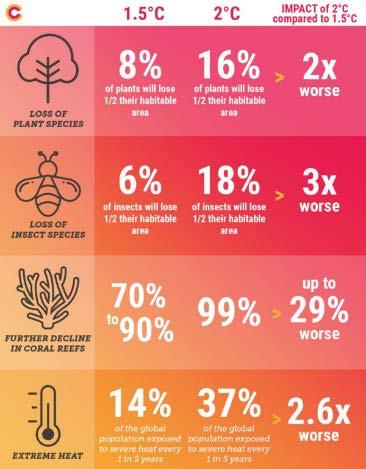
Whilst Climate Adaptation Strategies will be incorporated in the next iteration of this AMP it is worth noting the significant amount of work undertaken by Bayside Council in this a space. Council has commenced work on developing a climate change management guide and how to mitigate its impacts
Publications include:
1. Botany Bay Council's Sea Level Rise Policy
2. Coastal Erosion Studies: Sea level rise studies commissioned by Council show that developments within Botany Bay have contributed to coastal erosion
3. Bayside Environment and Resilience Plan 2032
4. Various Urban Heat Island effect mitigation studies. Bayside Council is reviewing its plans as well as working with local and regional stakeholders to increase green city spaces for a more comfortable place to live and work.
How climate change impacts open space assets will vary, as will the way in which Council manages those impacts depending on the asset category and the type of services affected.
As a minimum, Council needs to consider future trends associated with climate change, how these trends could affect existing assets and services, and how to plan and manage potential climate change impacts moving forward. Risk and opportunities identified to date are shown in Table 12.
New Asset Description Climate Change impact Asset Resilience Response to Climate Change
New Open Space Assets Increased risk of damage and impact to services due to extreme weather events.
All new Open Space assets to be of robust material composition and design providing durability and long useful life expectancy.
New assets Increased risk or drought Water harvesting and water storage infrastructure to reduce the dependency on potable water supply for watering gardens, irrigation etc.
The provision of adequate financial resources ensures that Council’s open space assets are appropriately managed and preserved. If financial provisions fall below requirements this may have a direct impact on community development and if prolonged, results in substantial needs for ‘catch up’ expenditure imposed on the community in the future. Additionally, deferred renewal results in increased and escalating reactive maintenance as aged assets deteriorate at increasing rates.
To ensure responsible and sustainable stewardship of our open space assets, we are committed to balancing our community’s needs and aspirations with what is affordable for ratepayers. Making decisions about funding our assets requires ongoing balancing of service levels, risk and the need to adequately maintain and renew assets. Our aim is to achieve long term asset sustainability.
To ensure the resources needed to manage our assets are provided, integration of the Asset Management Strategy and the Long-Term Financial Plan (LTFP) is critical
The balance between maintaining and renewing our assets, and accommodating funding for improvement and growth, is a constant challenge. Underfunding the renewal of an asset can lead to lower levels of service and deferring an important asset upgrade can mean that the asset is no longer ‘fit for purpose’.
This AMP has considered a minimum of 3 options linked to Community Levels of Service. The adopted expenditure included is consistent with our affordability after considering at least 3 scenarios. All funding requirements identified for each asset portfolio have been allocated in the LTFP. This will require future monitoring and further analysis as new asset information becomes available, such as updated asset condition data. Funding requirements may potentially change which will require adjustment to the LTFP
Key financial assumptions made in the investment analysis are:
Forecast expenditure 2025 to 2029 for Acquisitions and Renewals taken from current Capital Projects Program (CPP). The CPP is a list of Council acquisition and capital renewal projects with approved funding that are scheduled to proceed between 2025 and 2029.
Forecast expenditure 2030 to 2035 for Acquisitions is based on forecast trend for the CPP.
Forecast expenditure 2025 to 2035 for Operations and Maintenance is based on data from Bayside ‘Special Schedule No.7’ which reports Operation and Maintenance expenditure on infrastructure assets. Figures used for both Operations and Maintenance costs are the annual amount charged for open space infrastructure assets for the financial year 2023 / 24.
Disposal expenditure based on current CPP data and planned divestment of assets. As other assets reach end of life Council will make decisions on whether these assets are renewed, replaced, or sold
To achieve the financial objectives outlined in the Long-Term Financial Plan, Council has implemented an improvement plan focused on identifying budget efficiencies to allocate funds annually for the future renewal of existing infrastructure assets.
The former Rockdale City Council (West) collects a special levy from ratepayers within its area, which is transferred into an externally restricted reserve called the “Infrastructure Levy” reserve. These funds are exclusively used for infrastructure renewal within the former Rockdale Council area. However, residents of the former City of Botany Bay Council (East) do not pay this levy, leaving the area without a dedicated funding source for renewing its ageing infrastructure. As a result, Bayside Council must seek alternative funding sources, such as grants and planning agreements, to support infrastructure renewal on the east side of Bayside
Additionally, through its improvement plan, Council has established an internally restricted reserve known as the “Infrastructure Maintenance” reserve. This reserve is supported by annual budget allocations and is designed to fund infrastructure renewal across all of Bayside
This AMP balances available funding between Operational / Maintenance, Renewal, Upgrade and New, to ensure that available funding is allocated for the best long-term outcome (the condition of our open space assets). Using life-cycle based modelling, the AMP has considered multiple iterations and simulations. Each simulation considers intervention levels (technical service levels) and the cost of delivering these service levels, should Council choose to adopt them.
The deliberations have considered a 10 year period with three scenarios based on permutation of funding and service levels. The asset portfolio modelling analysis has been prepared for four different funding options. These funding options are described in Table 13 - Scenario Modelling Funding Options.
Table 10 - Scenario modelling funding options
Scenario Option Description
Option 1
Option 2
Option 3
This scenario identifies and models the necessary funding required each year to deliver the current levels of service for the asset portfolio over a 10 year period.
This scenario models the impact on asset performance if Council were to invest based on the 2024 planned funding allocation projected over a 10 year period.
This scenario models the impact on asset performance if Council were to invest based on the National State of the Assets benchmark of 1.6% per annum of the asset portfolios Current Replacement Cost, projected over a 10 year period.
The Table 14 provides a summary of the modelling forecasts for each of the three scenarios, for all asset classes detailed within this AMP
Table 11 - Future funding investment options for Open Space
It is noted that the former Rockdale Council (West) have a dedicated funding source in the form of the Infrastructure Levy Reserve, to complete capital renewal works, while former Botany Council (East) residents do not contribute to the Infrastructure Levy Reserve. It is perceived there is a likelihood of funding imbalance based on this historic levy. Council is determining a way forward for as part of review and improvement.
This section presents a summary of the funding performance as a comparison between the funding allocated to the East vs West regions of Bayside
Table 15 below highlights the variances with respect to the proportion (value) of assets in each region.
Table 12 - Future funding investment options outcomes for Open Space: East Vs West
The 10 year funding considered sufficient to enable the open space asset portfolio to achieve its intended level of service through capital and maintenance activities is shown in Table 16 below.
Table 13 - Desired 10 year Funding Strategy
There are several studies and investigations being undertaken which may identify additional funding needs to acquire new and upgrade existing assets to meet required service levels, over the next 10 years.
Council acknowledges that additional work is required to improve its understanding of the future new and upgrade funding requirements, and this has been identified as an improvement item in this AMP.
This section outlines how Council will measure its asset management performance. The identified action items in Table 17 will enable Council to improve its asset management capability, to enhance asset value and deliver more for stakeholders while balancing cost, risk and performance.
The key assumptions made in this AMP and risks that these may change are shown below.
Table 14 - AMP Key Assumptions
Key Assumption
Asset and component conditions reflect the assets' current condition as at 2024.
The allocation of renewal funds has been based on the asset replacement costs developed as part of past valuations.
Risk of Change to Assumption / Impact to Model
Very Low (data assessed by specialist providers and based on IPWEA Practice Notes).
Low as the financials and engineering rates have been reconciled.
Current maintenance funding levels are considered adequate. Medium
The funding needs for new & / or upgrade assets will be identified via studies and masterplans and funding sought from grants and/or developer contributions. As identified, these will be incorporated into future AMP revisions.
Capital renewal treatments are like for like and do not account for additional costs to upgrade and/or utilise new technologies and materials.
Current Levels of Service are considered appropriate and meet community needs.
Existing inspection and maintenance contracts will not change.
Asset register currency pertaining to asset quantities.
Network strategic condition inspections will be funded on a 3-4 year cyclic basis and incorporated into the Operational budget.
Medium
Medium to Low
Low
Medium
Low
Low
Current human resource plan will not change in the near future. Low
The Open Space AMP has a planning horizon of 10 years, and it is based on details documented within the Asset Management Strategy. The AMP will be reviewed and updated in the year following Council Local Government elections.
This AMP will be reviewed and amended to recognise any changes in service levels, needs arising from strategies, studies, master plans and/or resources available to provide those services as a result of the budget decision process.
The effectiveness of this Open Space AMP will be measured and monitored on the basis of annual strategic Council indicators as follows:
The performance of Council achievement against the Levels of Service documented in this AMP.
Performance against the Council’s ratios ie Asset Renewals Ratio, and Asset Consumption Ratio measured against recommended IPWEA guidelines.
Performance of Asset health - currently measured at 4 year condition assessment cycles and measured against the funding scenario in the adopted plan.
The Asset Management Improvement Plan set out in Table 18 below details key improvement tasks. Completion of these tasks will improve Council’s asset management capabilities for the open space asset class.
Table 15 - Improvement Actions Task Improvement Items
1 Undertake Community engagement to adopt a level of service that balances Council’s cost and risk appetite.
2 Establish and enforce an improved maintenance schedule across the entire open space portfolio.
& Lifestyle Ongoing.
Works, Parks & Open Space.
3 Develop and implement an asset handover process to enable 100% asset data capture of new assets gifted or constructed by others and those renewed, to be captured in Council’s asset register on an annual basis. City Infrastructure, Property, City Projects, City Works Completed December 2024
4 Review and adopt a framework which will be incorporated into the open space asset register and second generation models.
5 Identify all Bayside heritage open space assets. Ensure these assets have a CMP in place where necessary to inform any future capital renewal works. Set up a new open space attribute ‘heritage’ in TechOne so heritage open space can be clearly identified.
6 Ensure Place Making considerations are included in future iterations of this open space asset management plan.
7 Establish repair and maintenance obligations of Lessee’s and Licensee’s and ensure open space managers are enforcing these requirements with the custodians of Council properties.
8 Develop climate adaptation and reporting.
9 Incorporate infrastructure resilience and climate change mitigation strategies in future iterations of this open space asset management plan.
10 Conduct an internal review of asset information, how and where it is housed and updated to ensure the most accurate information is utilised and maintained.
11 Develop an overarching evaluation process to review the performance and improvements of Council’s infrastructure asset classes as outlined in the Asset Management Plans.
Infrastructure July 2026
Planning. December 2026
/ Libraries & Lifestyle June 2026
& Resilience December 2025
Infrastructure December 2026
City Infrastructure Ongoing
City Infrastructure Ongoing
Key Terms
Asset Health
Capital Expenditure
Condition or Service State
Asset Health refers to the remaining service life aggregated by individual components for the entire asset
Expenditure for new infrastructure and for the renewal or upgrade of existing assets that enhances the service potential of the assets.
The service state involves the use of a single integer between 1 and 5 to describe the ability of the asset in question to fulfill its function; where 1 is very good and 5 is very poor.
Consumption Ratio Written down Value of an asset / Gross Replacement costs measured using the remaining life of an asset or its component. Recommended target = 60 - 85%.
Financial Ratios Reporting ratios in Financial Statements - Renewal funding ratio, Life Cycle Indicator and Consumption Ratio.
IIMM International Infrastructure Management Manual
Infrastructure Assets Stationary systems forming a network and serving whole communities where the system as a whole is intended to be maintained indefinitely by continuing replacement and refurbishment of its components, eg, roads, facilities, footpaths, drains, parks.
Intervention Level
The physical state of an asset is defined by its condition, capacity or functionality at which Council will determine a capital or maintenance action on an asset.
ISO55000 55000 Series, International Suite of Asset Management Standards
LATM Local Area Traffic Management Devices
Lifecycle Indicator Planned 10 year LTFP / Desired 10 year LTFP costs (maintenance, renewal, upgrade, and new expenditure for desired service level). Recommended target = 85 - 115%.
Operations / Maintenance Expenditure that is incurred to ensure that the asset continues to provide its predetermined service capacity and quality and achieves its expected useful life. Maintenance expenditure is of a regular and ongoing nature.
Renewal Funding Ratio
Service Centric Approach
Planned renewal budget for the next 10 years / Desired renewal costs for the next 10 years (as per the desired service level). Recommended target = 85 - 115%.
An approach where the characteristics, locations, condition, and functional fitness of future assets are defined by the services that Council intends to provide and the levels at which these services are targeted.
Online
Email: council@bayside.nsw.gov.au
Website: www.bayside.nsw.gov.au
Phone
1300 581 299 or +61 2 9562 1666
Visit our Customer Service Centres
Monday to Friday 8:30 am – 4:30 pm
Rockdale Library, 444-446 Princes Highway, Rockdale Westfield Eastgardens, 152 Bunnerong Road, Eastgardens
Post
Bayside Council PO Box 21
Rockdale NSW 2216